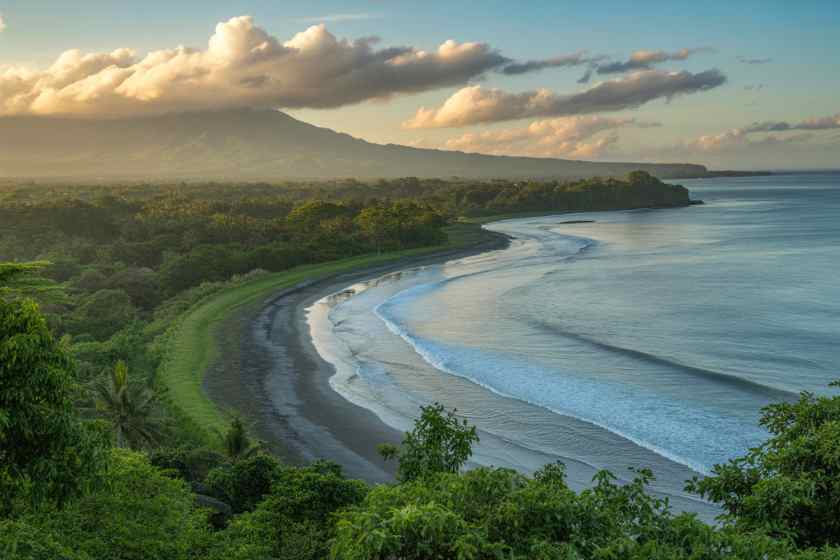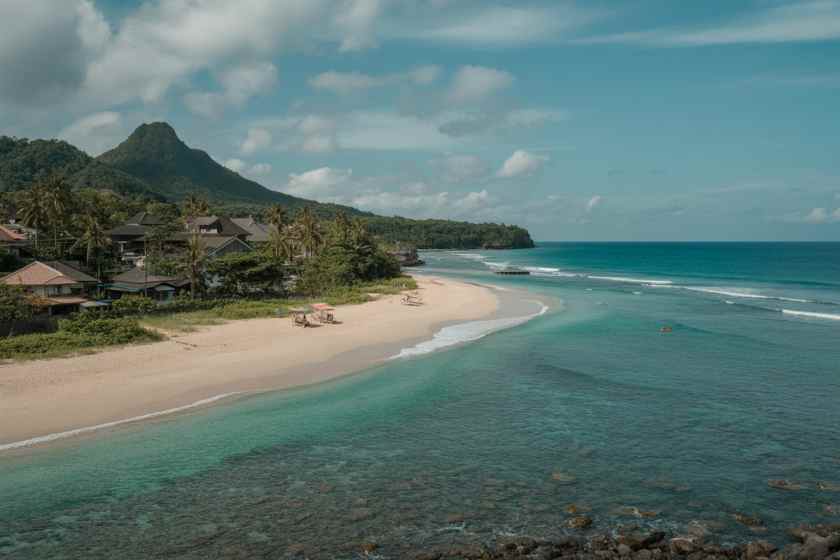Bali Prepares for a Difficult Winter Season with Extreme Heat and Flood Warnings, Here’s All You Need to Know

Bali-arguably one of the world’s most popular tourist destinations-is expected to endure extreme heat and a grueling monsoon season as 2025 draws to a close. Tourists visiting the island over the coming months have been warned to expect unusually high temperatures and the risk of unprecedented flooding. This comes amid growing concerns about the region’s climatic changes and the potential impact on the tourism sector-a key pillar of the island’s economy.
While Bali is famous for its sun-drenched beaches, lush landscapes, and vibrant culture, visitors this season may face less-than-perfect weather conditions: rising temperatures and intensified monsoon rains. This implies that travelers will need to be especially prepared and conscious of the climatic shift during their stay.
Unprecedented Heatwaves: What Tourists Need to Know
The Bali Meteorology, Climatology, and Geophysics Agency (BMKG) has issued urgent warnings to residents and visitors alike, forecasting extreme heat in Bali and across other regions of Indonesia. As temperatures in provinces like Bali, East Java, South Sumatra, and Jakarta soar, the island faces one of its hottest periods on record.
In Jakarta, temperatures have already exceeded the average by 3°C, reaching highs of 35°C. Coupled with poor air quality, the heat has created a sweltering environment that could make outdoor activities unbearable.
For travelers planning to visit Bali’s top tourist spots, such as Kuta, Sanur, and Ubud, the forecast calls for extreme heatwaves and scorching sun, which could potentially affect comfort levels and outdoor sightseeing. Tourists are urged to limit outdoor activities, especially during the hottest parts of the day, and to stay hydrated while protecting themselves from the sun’s harmful rays.
The Indonesian government has advised elderly people and children to stay indoors during extreme heat periods, while the general public is encouraged to minimize strenuous physical activity to avoid heat-related illnesses.
Monsoon Season: Another Challenge for Bali’s Tourists
In addition to extreme heat, Bali is also bracing for an active monsoon season. The arrival of heavy rains, expected to begin later in the fall, adds another layer of complexity to the situation. Bali’s rainy season typically peaks in December and January, but forecasters predict intensified rainfall throughout the early winter months.
Monsoon rains in Bali are expected to affect a wide range of areas, with Ubud, Bedugul, Kintamani, and Sanur set to experience the heaviest rainfall. As the rain moves southward, it will impact key tourist destinations, including Nusa Dua, Kuta, and Tanah Lot. This increased rainfall could lead to flash floods, particularly in low-lying areas and near rivers.
The full supermoon on November 5th, which is expected to trigger higher tides and extreme waves, is particularly concerning for those visiting Bali’s coastal regions. Authorities are closely monitoring the situation, especially around areas prone to tidal flooding, which could affect beachfront properties and popular tourist spots.
Flooding Risks and Preparedness Efforts in Bali
The warning about potential flooding comes after devastating floods struck Bali in September 2025, causing significant damage to infrastructure and local communities. In response to this, local authorities, led by Mayor I Gusti Ngurah Jaya Negara, have been working tirelessly to mitigate the risk of future flooding. Emergency measures are already in place, and the government has transitioned from Disaster Emergency Response to Emergency Transition Status, signaling a move toward recovery while maintaining vigilance.
The ongoing preparations include efforts to improve infrastructure, especially around waterways and rivers, which are essential for controlling floodwaters. The Ayung, Badung, Mati, and Unda rivers, which run through popular tourist areas, are being fortified to handle the increased runoff during the monsoon. Additionally, the government is working to prepare local businesses and tourist facilities to handle any potential flooding that could disrupt visitors.
How Tourists Can Stay Safe and Enjoy Their Bali Visit
For those planning to travel to Bali, it is essential to take necessary precautions in light of the extreme heat and the expected heavy rains. Here are some tips for a safe and enjoyable visit to Bali during this time:
- Prepare for Extreme Heat: Tourists should stay indoors during the hottest parts of the day (usually between 11 a.m. and 4 p.m.) and wear sunscreen, hats, and light clothing. It’s also important to stay hydrated and avoid intense outdoor activities in the heat.
- Check Weather Forecasts: Keep an eye on local weather updates, especially from Bali’s Meteorological Agency, to stay informed about rain and flood forecasts. Be aware of areas that might be more prone to flooding.
- Stay in Safe Locations: Choose accommodations away from flood-prone areas, and if staying near the coast, ensure your hotel has flood defenses or is elevated above high tide levels.
- Get Comprehensive Travel Insurance: Ensure your travel and health insurance covers extreme weather events and natural disasters. Review your policy to understand any exclusions related to weather-related disruptions.
- Plan for Delays: Weather-related disruptions can affect transportation, including flight delays and road closures. Ensure flexibility in travel plans and keep extra time in case of unforeseen delays.
- Enjoy Indoor Attractions: While Bali’s outdoor attractions may be impacted by the weather, there are plenty of indoor activities such as art galleries, museums, spas, and cooking classes that tourists can enjoy.
The Future of Bali’s Tourism Amid Climate Challenges
The tourism sector, which is resilient and full of charm, will continually adapt to the weather and climatic changes of Bali. With increased global attention for sustainability, Balinese efforts to address environmental challenges are crucial for maintaining the tourism infrastructure of the island. As climate change brings more extreme events, Bali will need to invest even more in adaptation measures to protect its tourism assets.
Despite the challenges presented by extreme heat and rainfall, Bali still manages to be an iconic destination that attracts millions of tourists each year. With proactive safety, improvement in infrastructure, and continued emphasis on responsible tourism practices, Bali can remain a friendly destination for visitors and a top destination in Southeast Asia.
The post Bali Prepares for a Difficult Winter Season with Extreme Heat and Flood Warnings, Here’s All You Need to Know appeared first on Travel And Tour World.

